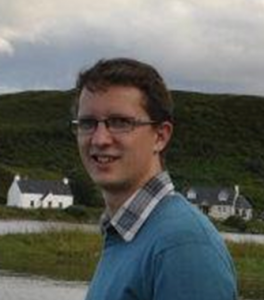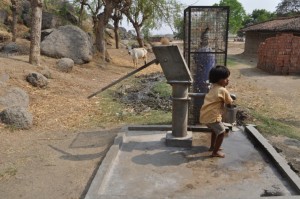 Donald John MacAllister, serves on the Executive Committee of Geology for Global Development. He is currently leading the Hazard Factsheet project. Donald John is a PhD student at Imperial College London and is researching the application of self-potential monitoring to seawater intrusion problems in coastal aquifers. He has a BSc in Geophysics from the University of Edinburgh and an MSc in Community Water and Sanitation from Cranfield University. He is currently working with UNICEF India on a project to support the Government of Uttar Pradesh to improve their water quality management structures. In this blog he writes about the background and aims of the project.
Donald John MacAllister, serves on the Executive Committee of Geology for Global Development. He is currently leading the Hazard Factsheet project. Donald John is a PhD student at Imperial College London and is researching the application of self-potential monitoring to seawater intrusion problems in coastal aquifers. He has a BSc in Geophysics from the University of Edinburgh and an MSc in Community Water and Sanitation from Cranfield University. He is currently working with UNICEF India on a project to support the Government of Uttar Pradesh to improve their water quality management structures. In this blog he writes about the background and aims of the project.
UNICEF, the United Nations Children’s Fund, is mandated by the UN general assembly to improve the health and well-being of children through the development and promotion of community services. In India that is achieved by providing technical support to the government departments responsible for those services. One key area of UNICEF’s work is to provide safe and sustainable access to water, sanitation and hygiene (WASH) services and facilities for all. UNICEF invests in WASH because it is essential for child survival, health and development.
Diarrhoeal diseases are one of the most significant causes of child mortality in India, and without investment in improved WASH services this is a sad statistic that is unlikely to change. Due to the prevalence of open defecation in India microbial contamination of water supply is common, however this is a commonly overlooked water quality problem. This is partly because India also suffers from high levels of Arsenic and Fluoride in groundwater, which is commonly the focus of government interventions in water supply. Groundwater is overwhelmingly the main source of water in the state, and sustainable management of this resource is extremely challenging. However this is not to say that arsenic and fluoride are not also major problems. Longer term exposure to arsenic can lead to severe diseases such as arsenicosis and cancer and fluoride exposure leads to skeletal fluorosis which can cause physical disability. However microbial contamination can kill almost instantly, and children are more vulnerable.
Groundwater is commonly believed to be safe from microbial contamination, however work by UNICEF suggests that many of the handpump sources in the state are contaminated with coliform bacteria, mostly due to poor construction and sanitary conditions of handpump sources. Clearly there is a significant challenge for the authorities who are responsible for water supply and sanitation – how do they target and prioritise their interventions? This is where my small project with UNICEF begins.
The government of Utter Pradesh (UP) is currently testing every single water source in the state (that equates to about 2.5 million handpumps!) for 8 key water quality parameters. These water quality parameters are known to affect consumer acceptability and more importantly consumer health, both in the short and long-term. For the first time this includes testing every single source for microbial contamination, as well as arsenic and fluoride. However what do you do with this vast resource of data and information once it is collected, how can you meaningfully interpret this to prioritise and target your interventions? How can you ensure that the results you get are accurate and reliable? I aim to answer these questions by developing quality assurance and control mechanisms and a composite drinking water quality index for two blocks in one arsenic affected district and one fluoride affected district. The water quality index takes each water quality parameter and aggregates them to produce one number that summarises the overall quality of each water supply, this can then be mapped and used to identify areas where water quality is most impaired. This allows non-experts, policy and decision makers to better understand the complexities of water quality and potentially helps in targeting interventions in priority areas. Although my area of work represents a very small percentage of the water sources in UP, if successful the plan is to scale the method up and potentially apply this throughout the entire state, and possibly in other states in India.
I want to thank the trustees of the Dudley Stamp Memorial Award and the Jeremy Willson Charitable Trust or making this work possible. I hope in a small way my work here can contribute to the betterment of the health and well-being of the children in this amazing state.
For more information on UNICEF India check out their website: http://www.unicef.org/india/
For more information about the Jeremy Willson charitable trust: http://www.jwct.org.uk/
For information about the Dudley Stamp Memorial Award visit this link.
To contribute in your own small way to the work of development charities, why not consider getting involved in our Hazard Factsheet project? For more information please follow this link: http://www.gfgd.org/projects/hazard-factsheets – or e-mail: publications[at]gfgd.org


Pingback: External Conference Opportunities | Geology for Global Development